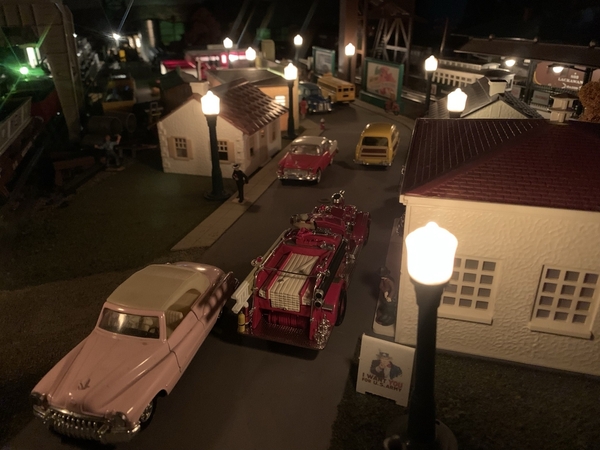On another thread (https://ogrforum.ogaugerr.com/topic/accessorie-wiring) I sorta opened a can of worms, and diverted the discussion from the original topic, by bringing up series wiring. I don't want to continue to divert the topic there so I'm starting a new thread.
I mentioned that years ago for the1st time using Lionel street lamps that I wired them in series and what I observed was a continual dimming from the first light on down. That was challenged in the other thread as not possible. I know what I saw so Yesterday I got a brand new 3-pack of Lionel street lights (I mention new because it was suggested that my observation could only happen in the lights were not identical) and ran 2 tests using different wiring patterns.
For ease of explanation say each lights wires are numbered wire 1 and wire 2.
Test 1: I connected all 'wire 1' wires together and tied them to POS on the trannie. Connected all "wire 2" wires and connected that to Ground on the trannie, sort of simulated parallel wiring, sorta. Here's the result:
TEST 2: connect POS on the trannie to wire 1 on first light. Connect first light's wire 2 to 2nd light's wire 1, and continue for 3rd light. sorta like "daisy chaining'. Here's the result. BTW: the trannie setting was the same in both tests. Light 1 and 2 were very dimly lit and light 3 didn't even light.
I might be directing this to the person that questioned my statement, a person that I highly, highly respect his electrical knowledge and told him so. I'm not looking to pick a fight with him (john) but hope that he sees this and helps me understand.
I would LOVE to simplify my Christmas layout light wiring using series wiring so if I'm doing something wrong, please tell me what it is, OK?
- walt






